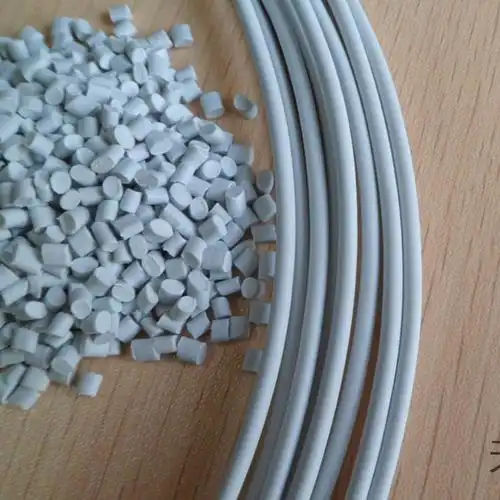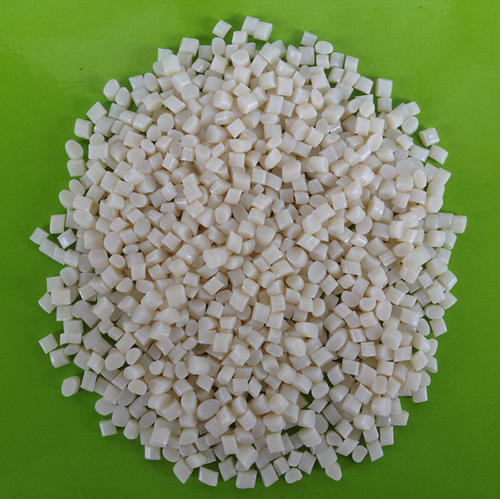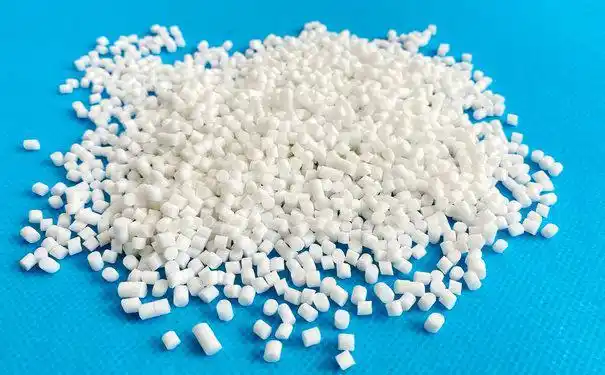As someone who’s been working with thermoplastic elastomers (TPE) for over a decade in the manufacturing and materials science field, I’ve seen my fair share of questions about how these versatile materials behave under different conditions. One question that pops up frequently, especially from engineers and product designers, is about the temperature at which TPE starts to release oil. It’s a valid concern—nobody wants their carefully designed product to turn into a greasy mess. So, let’s dive into the nitty-gritty of TPE, its oil release behavior, and how to manage it effectively.

Understanding TPE and Its Composition
Before we get to the temperature question, let’s take a step back and talk about what TPE is. Thermoplastic elastomers are a class of materials that combine the flexibility of rubber with the processability of plastics. They’re widely used in everything from medical devices to automotive parts because they’re soft, durable, and easy to mold. But here’s the catch: many TPEs, especially styrene-based TPEs (like SBS or SEBS), contain processing oils to achieve that soft, flexible texture. These oils are typically mineral-based or synthetic and are blended into the polymer matrix to enhance elasticity.
The presence of these oils is what makes the question of oil release so critical. When TPE is exposed to certain conditions—especially heat—those oils can migrate to the surface, causing a phenomenon known as oil exudation or “bleeding.” This can lead to a slick or greasy surface, which is not only unpleasant but can also compromise the performance of the product.
What Temperature Triggers Oil Release in TPE?
Now, let’s get to the heart of the matter: at what temperature does TPE start to release oil? The answer isn’t a simple number because it depends on several factors, including the type of TPE, the oil content, the formulation, and the environmental conditions. However, based on my experience and industry standards, I can provide some general guidelines.
For most SEBS-based TPEs (styrene-ethylene-butylene-styrene), which are among the most common types, oil release typically becomes noticeable at temperatures above 70°C (158°F). At this point, the polymer matrix starts to soften, and the oils, which are less tightly bound, begin to migrate to the surface. For lower-grade or highly oil-extended TPEs, this can happen at even lower temperatures, sometimes as low as 50°C (122°F). On the other hand, high-performance TPEs with advanced formulations (like those used in medical or automotive applications) may resist oil exudation until 100°C (212°F) or higher.

To give you a clearer picture, here’s a table summarizing the approximate temperature ranges for oil release in different TPE types:
|
TPE Type |
Typical Oil Content |
Oil Release Temperature Range |
Common Applications |
|---|---|---|---|
|
SBS (Styrene-Butadiene-Styrene) |
High (30–50%) |
50–70°C (122–158°F) |
Grips, toys, low-cost seals |
|
SEBS (Styrene-Ethylene-Butylene-Styrene) |
Moderate (20–40%) |
70–100°C (158–212°F) |
Medical devices, automotive parts |
|
TPV (Thermoplastic Vulcanizate) |
Low (10–20%) |
90–120°C (194–248°F) |
Weather seals, industrial components |
|
TPU (Thermoplastic Polyurethane) |
Very Low (<10%) |
100–150°C (212–302°F) |
Wearable devices, cables |
Note: These are general ranges based on standard formulations. Always consult your material supplier for specific data.
The table above shows that not all TPEs behave the same way. For example, TPVs (thermoplastic vulcanizates) are cross-linked, which makes them more resistant to oil release compared to SBS or SEBS. Meanwhile, TPUs (thermoplastic polyurethanes) often have minimal oil content, so they’re less likely to bleed even at higher temperatures.
Factors That Influence Oil Release
Temperature isn’t the only factor at play. Over the years, I’ve learned that several other variables can accelerate or mitigate oil exudation in TPEs. Here are the key ones:
Formulation and Oil Content: TPEs with higher oil content are more prone to bleeding. Manufacturers often add more oil to achieve a softer feel, but this comes at the cost of thermal stability. If you’re sourcing TPE, ask your supplier for the oil-to-polymer ratio to get a sense of how the material will perform.
Exposure Time: A TPE part exposed to elevated temperatures for a short period might not show significant oil release, but prolonged exposure (say, hours or days) can cause noticeable exudation. For example, a TPE grip left in a hot car (around 60–70°C) for days might start feeling greasy.
Environmental Conditions: Humidity, UV exposure, and contact with chemicals can exacerbate oil release. For instance, TPEs in outdoor applications might degrade faster under UV light, loosening the polymer structure and allowing oils to escape.
Processing Quality: Poorly mixed or overprocessed TPEs during manufacturing can lead to uneven oil distribution, increasing the likelihood of bleeding at lower temperatures.
Surface Treatment: Some TPEs are coated or treated to reduce oil migration. If you’re designing a product, consider specifying a surface sealing treatment or a low-oil TPE grade to minimize this issue.

Real-World Examples and Lessons Learned
Let me share a quick story from my early days in the industry. I was working on a project involving TPE overmolded grips for a consumer electronics product. The client wanted a super-soft, comfortable feel, so we used a high-oil-content SEBS-based TPE. Everything was fine during testing at room temperature, but when the product was shipped to a warmer climate, customers started complaining about greasy handles. After some investigation, we found that the grips were reaching temperatures of around 65°C in direct sunlight, which was enough to trigger oil release.
The solution? We switched to a low-oil SEBS grade with a slightly higher durometer (hardness) and added a thin UV-resistant coating. The result was a grip that stayed dry and comfortable even in hot conditions. The lesson here is simple: always test your TPE under real-world conditions, not just lab settings.
Another example comes from the automotive industry. A colleague of mine worked on a dashboard component made from TPV. The part was exposed to temperatures up to 85°C inside a parked car. Initially, there were concerns about oil release, but because TPVs have a cross-linked structure and lower oil content, the component performed flawlessly. This reinforced the importance of choosing the right TPE type for the application.
How to Prevent or Manage Oil Release
If you’re worried about oil release in your TPE application, don’t panic—there are practical steps you can take to mitigate it. Here’s what I’ve found works best:
Choose the Right TPE Grade: Opt for low-oil or high-performance TPEs like TPVs or TPUs for applications where heat exposure is a concern. Consult with your material supplier to select a grade with a heat deflection temperature (HDT) that exceeds your application’s requirements.
Test Under Real Conditions: Simulate the worst-case scenario for your product. If it’s a phone case, leave it in a hot car for a few days. If it’s a medical device, test it at the upper limit of its operating temperature. This will help you catch potential issues early.
Use Surface Treatments: Applying a barrier coating or plasma treatment can reduce oil migration. These treatments create a protective layer that keeps the oils locked in.
Optimize Processing: Work closely with your injection molder or extruder to ensure proper mixing and processing conditions. Overheating during processing can degrade the TPE and increase oil exudation.
Consider Alternative Materials: If oil release is a dealbreaker, you might explore non-TPE options like silicone or thermoset rubber, though these come with their own trade-offs (like higher cost or less processability).

Practical Tips for Designers and Engineers
If you’re designing a product with TPE, here are some actionable tips to keep in mind:
Specify Temperature Requirements: Clearly define the maximum operating temperature in your material spec sheet. Share this with your supplier to ensure you get a TPE grade that can handle it.
Request Material Data Sheets (MDS): Always ask for the MDS from your supplier. Look for details on thermal stability, oil content, and heat deflection temperature. This data is your best friend when predicting material behavior.
Prototype Early: Don’t wait until the final design to test TPE performance. Create prototypes and subject them to accelerated aging tests to simulate heat exposure.
Communicate with End Users: If your product might be exposed to high temperatures (e.g., outdoor gear), include care instructions to avoid prolonged heat exposure.
Common Misconceptions About TPE Oil Release
Over the years, I’ve heard a few myths about TPE and oil release that are worth debunking:
Myth 1: All TPEs release oil at high temperatures. Not true! High-performance TPEs like TPVs or TPUs are designed to resist oil exudation, even at elevated temperatures.
Myth 2: Oil release means the TPE is defective. Oil release is a natural behavior for some TPEs, especially those with high oil content. It’s not necessarily a defect—it’s about choosing the right material for the job.
Myth 3: Cooling the TPE stops oil release permanently. While cooling can slow down oil migration, once the process starts, the oils may continue to seep out over time, especially if the material has been compromised.

Related Questions and Answers
To wrap things up, here are some common questions I’ve encountered about TPE oil release, along with concise answers to help you navigate this topic:
Q: Can I use TPE in high-temperature environments like engine compartments?
A: It depends on the TPE type. TPVs or TPUs are better suited for high-heat environments (up to 120–150°C), but always check the material’s heat deflection temperature and test it under real conditions.
Q: How do I clean oil residue from TPE surfaces?
A: Use a mild detergent and warm water to gently clean the surface. Avoid harsh solvents, as they can degrade the TPE. If the oil release persists, consider switching to a low-oil grade.
Q: Does oil release affect TPE’s mechanical properties?
A: In most cases, minor oil release doesn’t significantly impact strength or elasticity. However, prolonged exudation can soften the material over time, so monitor performance in critical applications.
Q: Are there eco-friendly TPEs with low oil content?
A: Yes, some manufacturers offer bio-based TPEs with lower oil content or alternative plasticizers. Check with suppliers like Kraton or BASF for sustainable options.
Q: How can I tell if my TPE is releasing oil?
A: Look for a greasy or slick surface, especially after heat exposure. You can also perform a simple test: place the TPE part in an oven at 70–80°C for a few hours and check for residue.
Final Thoughts
Dealing with TPE oil release can feel like a bit of a puzzle, but with the right knowledge and approach, it’s entirely manageable. By understanding the material’s composition, selecting the appropriate grade, and testing thoroughly, you can ensure your TPE-based products perform reliably, even in challenging conditions. Over my years in the industry, I’ve seen how a little foresight and collaboration with suppliers can make all the difference. So, whether you’re designing a medical device, a car part, or a consumer gadget, take the time to get the TPE spec right—it’ll save you headaches down the road.
If you have more questions or need help with a specific TPE application, feel free to reach out or dive into the material data sheets. The world of TPEs is fascinating, and with the right approach, you can unlock its full potential without the greasy surprises.





